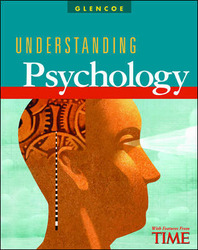
Understanding PsychologyChapter 17: Therapy and ChangeChapter OverviewsPsychotherapy is the general term used to describe the several approaches used by mental health professionals to treat psychological disorders. Chapter 17 describes several kinds of psychotherapy and how they are based on different theories of personality. Section 1 explains the functions and goals of psychotherapy. Psychotherapy involves verbal interaction between a therapist and client, the development of a supporting and trusting relationship, and an analysis by the therapist of the client's problems. A primary goal of psychotherapy is to help people gain control over their lives. Also described in this section are the characteristics of a good therapist and types of group therapy. Section 2 explores two kinds of psychotherapy: psychoanalysis and humanistic therapy. Psychoanalysis, which is based on the theories of Sigmund Freud, has the primary goal of making people aware of the unconscious impulses, desires, and fears that cause them anxiety. Terms associated with psychoanalysis and defined in this section include insight, free association, resistance, dream analysis, and transference. The goal of humanistic therapy, also called client-centered therapy, is to help people fulfill their human potential, or become self-actualized. Section 3 describes how cognitive and behavior therapies help people develop new ways of thinking and behaving. Cognitive therapies, which focus on changing the way people think, use the following principles: disconfirmation, reconceptualization, and insight. Behavior therapists, believing that undesired behavior is learned, try to change behavior using conditioning. This process, called behavior modification, is explained in this section. Cognitive-behavior therapy focuses on setting goals for changing a person's behavior and then placing more emphasis on changing the client's interpretation of his or her situation. The basis of biological approaches to treatment is the assumption that there is an underlying physiological reason for disturbed the behavior, faulty thinking, and inappropriate emotions an individual displays. Biological approaches to treatment rely on methods such as medications, electric shock, and surgery to help people. Section 4 discusses biological approaches and describes each method. |  |















